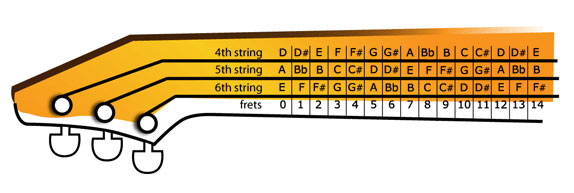Articles → Some notes on chordsChordsThere are a great variety of different chords, and given that each of them can be played in a number of ways, it’s not surprising that you can get confused. At MuzLand.info you will find more than a thousand charts of the most usable chords. Of course you don’t have to study them all, especially if you have studied the basics of chord generation. The most important thing is to remember the main ones, and beyond that you can be guided by what you already know when generating chords and adding harmony notes. I won’t dwell on this issue, as the site supports a chord chart production system, and chord charts are generated for every song. Moreover, if you are not satisfied with the default option, you can look through other options for the same chord (provided they are available in the database). To do that, just click the chord symbol. The site offers multiple charts showing some chord progressions as clearly as possible, for example with Alexander Ribak’s Foolin’. The reason for this is that this song is performed in a jazz style, and without special chords some important characteristics would be lost. These compositions are presented in three versions: an original version, an adapted version, and a simplified version. Finger positions are not given for the original version. Chords of C/G, G/F# typeIf you have seen such notation and don’t know what it means – don’t let it confuse you. Generally, this notation means “chord/bass-note”; that is the chord is specified by the letter before the slash, and the bass-note (different from the root (usual) bass-note) is specified after the slash. Please note that the first specified letter is the chord, and the second one is the bass-note. Whenever you can’t figure out where a certain note is on the neck, click the chord symbol; you will get a prompt in a pop-up window:  H, B and Bb chords – explanation is needed!There are two ways to notate si and si flat chords. The first is: si – H, while si flat – B; the second is: si – B, si flat – Bb. This ambiguity can result in some confusion. On this site, a combination of these two options is used, but not because we want to get you totally confused! In my opinion, notating si as H, and si flat as Bb implies certain degree of positive logic. At least, when looking at the chord you can identify exactly what it means in spite of the existing notational conflicts. In the English and Spanish versions of the site, the si chord is denoted as B, while the si flat chord – as Bb. This notation is more usual for foreign users.
Anton Gavzov |
||
|
|
||